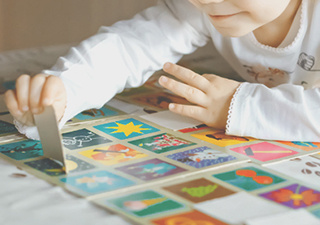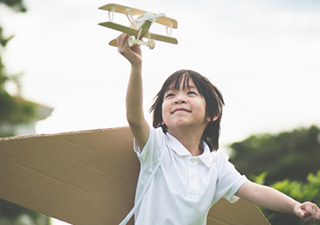
New year, new school, new opportunities for growth! Read our article as we share some tried and true tips for parents and children in the lead up to the first day of primary school.
A Whole New World Awaits
New classmates, new teachers, new school environment — your child’s tiny world is about to get a lot bigger. With these changes come opportunities for personal, social and cognitive growth.
The Countdown And Preparation Begins
In these weeks as you count down to your child’s first day of school, you may be wondering, “What will school be like for my child? Will my child be able to cope in the new environment?”
Parents can help by being proactive — research from professionals at Duke University suggests that establishing a strong communication channel with your child’s teachers helps and so does monitoring changes in your child's behaviour or mood when he or she first starts school.
Whether at home or in school, we’ve got some great tips for every stage of preparation that will help you (and your child) pave a smooth journey towards the new school term in January.
1. Create A Routine That Works
Studies have shown that routines help children feel safe and secure. Set up a routine that works for your child — whether it’s a shower before dinner or an afternoon snack before naptime, it’s important that your child gets into a routine that he or she is comfortable with.
2. Identify Friendly Figures In School
Helping your child identify teachers or staff he or she can go to for assistance is important. When your child recognises trustworthy figures of authority, he or she will feel more secure in the new environment.
Related Article: Gear Up For Primary 1
3. Prepare An 'Emergency' Fund
You may want to consider setting aside an “emergency fund” for your child. Placing extra money in a separate wallet or purse to be kept in his or her school bag means that your child will still have access to money if he or she misplaces pocket money. However, you should set some strict rules about when this money can be used.
4. Test Out That Transport Route
It may be a good idea to have a few dry runs of your child’s journey to and from school to help your child familiarise himself or herself with the route. Help your child identify key landmarks and remember the specific place where he or she will be dropped off or picked up from everyday.
Related Article: Raising A Responsible Child
5. Set Mini Goals To Achieve Together
Help to make the experience seem less daunting by setting mini goals for the first day of school. Start with small tasks like “Leave the house on time” or “Remember to bring my water bottle home” or “Meet one new friend in class today”. These mini goals give your child something to look forward to on his or her first day of school!
Download Our Special Guide To Surviving And Thriving In Primary 1
The Learning Lab would like to extend our help as you and your child are preparing for Primary 1 and the new adventures that lie ahead. Download our fun and informative guide filled with 25 great tips to help your child survive and thrive in Primary 1!
Students have to deal with retaining large volumes of information on a day-to-day basis as they take multiple subjects in school. School hours in Singapore are pretty long too, with students spending an average of seven hours in school every day.
Naturally, not all information will be retained, but helping your child to retain key messages and important points can exponentially improve the quality of his or her learning and academic performance.
Try these memory and concentration techniques and exercises with your young learner.
1. Break Information Down into Smaller Chunks

Our brain is not very good at retaining large amounts of information. That is why the “chunking” strategy, a simple technique that aids memorisation, appears everywhere in our daily lives, though you may not have noticed it before.
For example, phone numbers are chunked in smaller groups. +6567338711 is comparatively a lot more difficult to remember as opposed to when it is chunked as +65 6733 8711.
Special occasions and historical dates are the same, like how Singapore’s independence day is easier to recall when chunked as 09/08/1965 instead of 09081965.
An article by The Atlantic touches on the effectiveness of chunking. Daniel Bor, neuroscientist and author of “The Ravenous Brain: How the New Science of Consciousness Explains Our Insatiable Search for Meaning”, states that our natural tendency to see patterns and make connections is not just important for memory, but that it is also a source of creativity. It affirms Steve Jobs's words that “creativity is just connecting things”.
Try chunking as a fun exercise to help your child remember information and processes.

For instance, if your son or daughter wants to learn how to bake or cook, ask him or her to chunk the process. He or she can start off identifying the ingredients required for the recipe, before proceeding to acquire the ingredients.
Then, you can guide your child in retrieving the necessary kitchen tools. After which, you can sit down and write out the recipe’s steps with your child, and proceed to get hands-on with baking or cooking.
This way, the gap between the idea and the end result looks more achievable and manageable.
2. Ask Your Child to Teach You
A fun teacher-student role-playing exercise with your child can help him or her remember details and lessons better. Assign your child the role of a teacher whilst you take on the role of his or her student.
This is an effective mental exercise as your child gets to fully understand the subject by explaining it to you in his or her own words. It also empowers your son or daughter by gaining a sense of responsibility, as well as an eagerness to learn.
In addition, your child gets to build confidence and hone his or her skills in speaking and presenting.
3. Introduce Fun Memory Games

You can engage your child in games like “Memory”. This mental picture game is easy to pick up. It involves a deck of picture cards containing matching images in pairs.
You spread the cards out, image-side down, on a flat surface and each player gets a turn flipping two cards for a “reveal”. The revealed cards are again flipped face down unless a player uncovers a matching pair. Upon uncovering a matching pair, the player gets to keep the cards. The player who has the most amount of identical cards at the end of the game, wins.
Put a personal twist to the game by DIY-ing a deck of Memory cards with your own images like family photos. This can open up room for spirited discussion and strengthen the bond between parent and child. You can further challenge your child’s memory this way by asking your child where and when the photo was taken, as well as the scenarios involved in the memory.
You can also try a game of “What’s Missing”. All you need to do is to gather random objects from around the house, arrange them on a table and verbally list out the objects. Ask your child to remember as many of the objects as possible.
Then, cover the items with a cloth. Instruct your child to close his or her eyes before removing one item from under the cloth. Your child can open his or her eyes after you placed the removed object out of sight. You can proceed to remove the cloth and ask your child to tell you what’s missing. You can gradually withdraw more objects as your child’s memory improves.
4. Meditate to Sharpen Mental Focus

The Exploration of Consciousness (EOC) Research Institute makes a striking point when they noted that: “It’s a myth that childhood is a carefree time. The fact is that children experience many fears — fear of the dark, fear of ghosts, fear of abandonment, fear of the future, fear of not being good enough, etc. By training children to focus on one thought, sound, or breath at a time, meditation teaches them how to focus in the moment, where they are safe.”
Meditation offers more than just mental focus and emotional security. A study published by the Journal of Applied School Psychology found that meditation helps to improve the memory of “students as young as first grade”.
In another research paper titled “Mindfulness-Oriented Meditation for Primary School Children: Effects on Attention and Psychological Well-Being”, it is noted that “mindfulness-meditation would promote enhanced focus and concentration that can then reverberate on children’s behavioral regulation, socio-emotional development, and academic skills”.
Encourage your child to sharpen his or her mental focus simply by sitting still, closing his or her eyes, and focusing on breathing only — the inhalation and exhalation, the rising and the falling of the chest, the warm and the cool sensations under the nose.
Advise your child not to explore whatever thoughts that may arise during the sitting, and to purely feel and listen to the sound of his or her breath.
It is normal for your child to be restless, fidgety, and frustrated in the process. As with physical training, mind training also requires patience, practice and commitment.
5. Encourage Physical Exercise or Activity

Mental exercise surely helps with memory and concentration, but the brain still needs support from the body.
Physical exercise brings more oxygen to the brain, “reducing the risk for disorders that lead to memory loss, such as diabetes and cardiovascular disease”, according to Help Guide, an online resource for mental health and wellness.
This is also reinforced by a 2018 study at the University of California where scientists found that “parts of the brain responsible for memory formation and storage increased after a brief interval of light exercise — such as 10 minutes of slow walking.”
If your child is too distracted to keep his or her focus on a task, a fun and physical break from the tedium of routine can bring your child’s attention, memory and concentration back. It can be as simple as walking to the neighbourhood playground or cycling around your estate.
Help Your Child Learn More Effectively
By applying these techniques, you not only give your child free and easily accessible tools for mental improvement but this also allows you to track your child’s memory and concentration progress.
At The Learning Lab, we design our teaching materials to pique our students’ interest and draw their full attention.
We realise that children's brains are wired to absorb more information about a subject or topic that they enjoy. This is why we are constantly refreshing our curriculum and incorporating trending topics that our students can relate to.
We'd love to share other ways you can improve the way your child learns.
The Learning Lab is now at locations. Find a location that suits your needs.
If you have any questions about our programmes, please email us at enquiry@thelearninglab.com.sg or call us at 6733 8711 and we will be happy to assist you.

